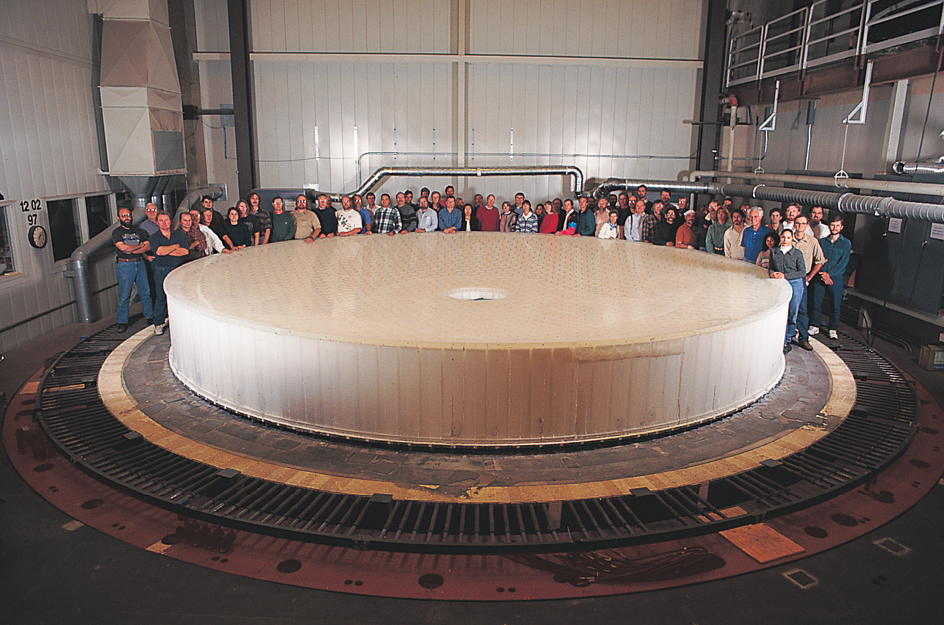Mirror is any smooth surface that reflects most of the light striking it. Only a small fraction of the light is absorbed by a mirror. In addition to being nonabsorbent, a surface must be smooth to about 1/25,000 inch (0.0001 centimeter) to reflect sharp images. Some rough surfaces reflect light, but they scatter it in all directions so that no image is formed.
Most mirrors are made by putting a thin layer of silver or aluminum onto a sheet of high-quality glass. The glass supports the metallic layer and protects its shiny surface. Many mirrors in scientific instruments have the metal coating in front of the glass. A polished sheet of metal–without glass–can also serve as a mirror.
Images reflected by a mirror vary according to the mirror’s shape. There are three principal kinds of mirrors: (1) plane mirrors, (2) convex mirrors, and (3) concave mirrors.
Plane mirrors
have a flat surface. Most looking glasses are plane mirrors. A line perpendicular to a plane mirror at any point of reflection is called the normal. Light strikes the mirror at some angle to the normal, and this angle is known as the angle of incidence. Light is reflected back at an equal angle on the other side of the normal. This angle is called the angle of reflection. The two angles are always equal.
An image in a plane mirror is a virtual image, one that appears to be behind the mirror. It is erect (correct end up), but reversed from left to right. The image is the same size as the object it reflects and appears to be equidistant from the mirror.
Convex mirrors
are curved like part of the outer surface of a sphere. When a convex mirror is illuminated by parallel rays of light, the reflected light seems to come from a point behind the mirror called the focus. The focus is halfway between the mirror and the mirror’s center of curvature, the center of the sphere of which the mirror is a part.
A convex mirror forms virtual images that are erect and demagnified–that is, smaller than the object being reflected. Many automobiles have a convex rear-view mirror, which provides a wider field of vision than a plane mirror. But the reflected objects appear farther away than they are because they are demagnified.
Concave mirrors
are hollow and curved like part of the inner surface of a sphere. The focus and center of curvature are both in front of the mirror. The focus is a real focus because parallel light rays striking the mirror meet at this point when they are reflected. Solar ovens use concave mirrors to focus sunlight.

An image produced by a concave mirror may be either a virtual image or a real image. A real image, unlike a virtual one, is formed in front of the mirror and is produced by the actual intersecting of reflected light rays. The properties of an image formed by a concave mirror are determined by the position of the object being reflected. For an object between the mirror and its focus, the image will be virtual, erect, and magnified. Objects beyond the focus, however, produce real images. They may be erect or inverted, and magnified or demagnified, depending on the position of the object.
Concave mirrors include shaving mirrors, make-up mirrors, and mirrors in reflecting telescopes. Concave and convex mirrors both produce somewhat distorted images.
